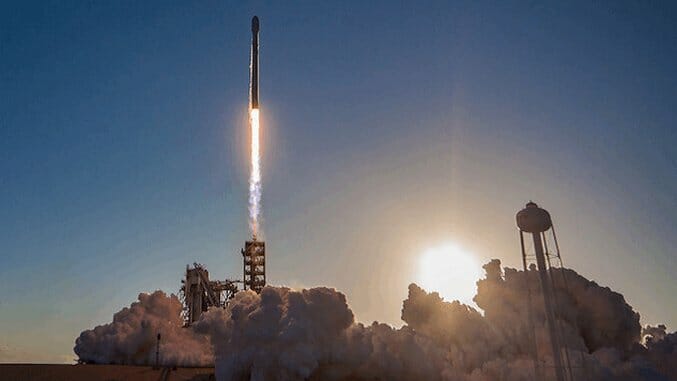Space Matter: When Are We Going to Mars?

If you look back over my previous Space Matter columns, I talk about going to Mars like it’s an inevitability—and to me, it is. Whether it’s NASA or SpaceX or another private company that gets us there first, humans will set foot on Mars in the next two decades.
But when that will happen is harder to predict. And recent news from NASA hasn’t been encouraging.
NASA has been developing a new rocket, the Space Launch System (SLS), which, when finished, will be the most powerful rocket ever constructed. It will be the rocket that takes NASA’s astronauts to Mars. They’re also simultaneously working on a crew vehicle, Orion, that returns to the capsule technology of Mercury, Gemini, and Apollo after testing out something new with the Space Shuttle. Orion won’t take a crew all the way to Mars; the interior space is much to small to support a crew for the nine-month journey to the red planet.
 The Mars Curiosity rover takes a self-portrait on Mars (Image credit: NASA/JPL-Caltech/MSSS)
The Mars Curiosity rover takes a self-portrait on Mars (Image credit: NASA/JPL-Caltech/MSSS)
Instead, the organization envisions a deep space transport system that will make multiple journeys to and from Mars, ferrying crew and equipment between our sister planet and the Moon. That’s right, we’re going to establish a lunar base It won’t be occupied full time, unlike the International Space Station, but it will provide a jumping-off point for further exploration of the solar system. Orion will ferry astronauts to this Moon base, and the organization will construct it in space using SLS’s lift power. NASA plans to begin this process in 2023—but I wouldn’t count on that date. Given recent announcements from the organization, that is likely too aggressive of a timeline.
![]()
Two weeks ago, a collective groan went around the science and space communities, as NASA announced that the first test flight of the SLS rocket (with Orion atop it) would be delayed—again. The sort-of-original plan, back in 2016, was for a tentative November 2018 launch. As whispers grew that NASA couldn’t meet that commitment, and the launch would be pushed into 2019, back in February the president asked NASA to research the feasibility of putting crew aboard EM-1. Now, while there has always been a plan to have an Orion capsule aboard the first SLS test launch, NASA wasn’t planning on putting astronauts aboard for multiple reasons, mainly because the life support systems wouldn’t be ready. I always thought it was a terrible idea —while the idea of getting humans into space sooner was exciting (after all, the United States hasn’t been able to launch our own astronauts into space since the retirement of the Shuttle fleet in 2012), putting astronauts aboard the first test flight of the most powerful rocket ever constructed seemed like a terrible idea.
-

-

-

-

-

-

-

-

-

-

-

-

-

-

-

-

-

-

-

-

-

-

-

-

-

-

-

-

-

-

-

-

-

-

-

-

-

-

-

-

 The EM-1 heat shield for Orion is unloaded at Cape Canaveral for processing (Image credit:
The EM-1 heat shield for Orion is unloaded at Cape Canaveral for processing (Image credit:  SpaceX’s Falcon 9 rocket lifts off on another successful mission, Inmarsat-5 (Image credit:
SpaceX’s Falcon 9 rocket lifts off on another successful mission, Inmarsat-5 (Image credit: 






































